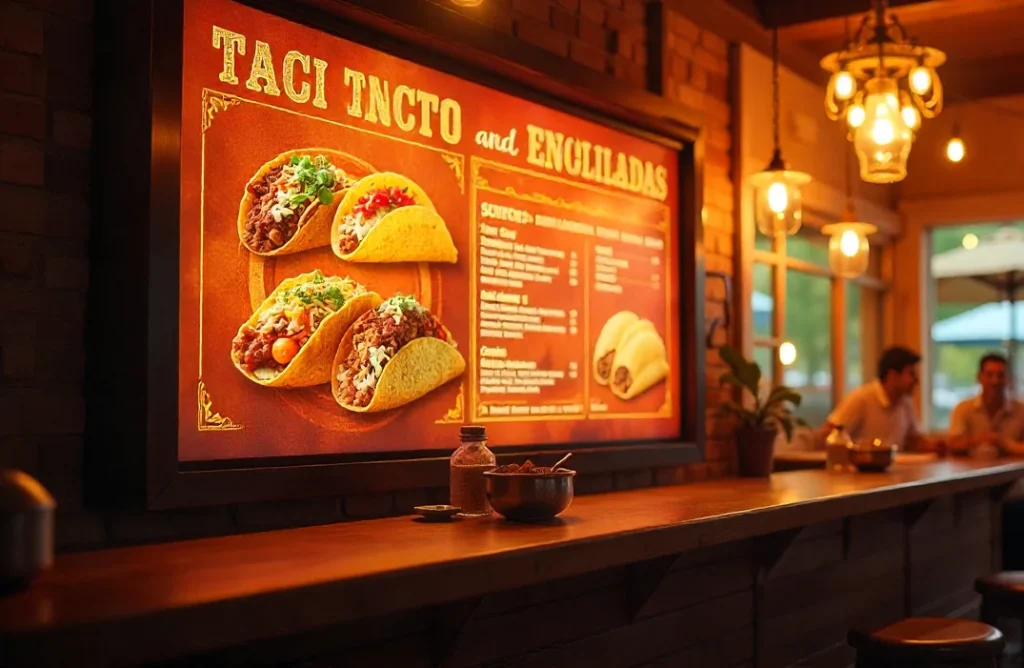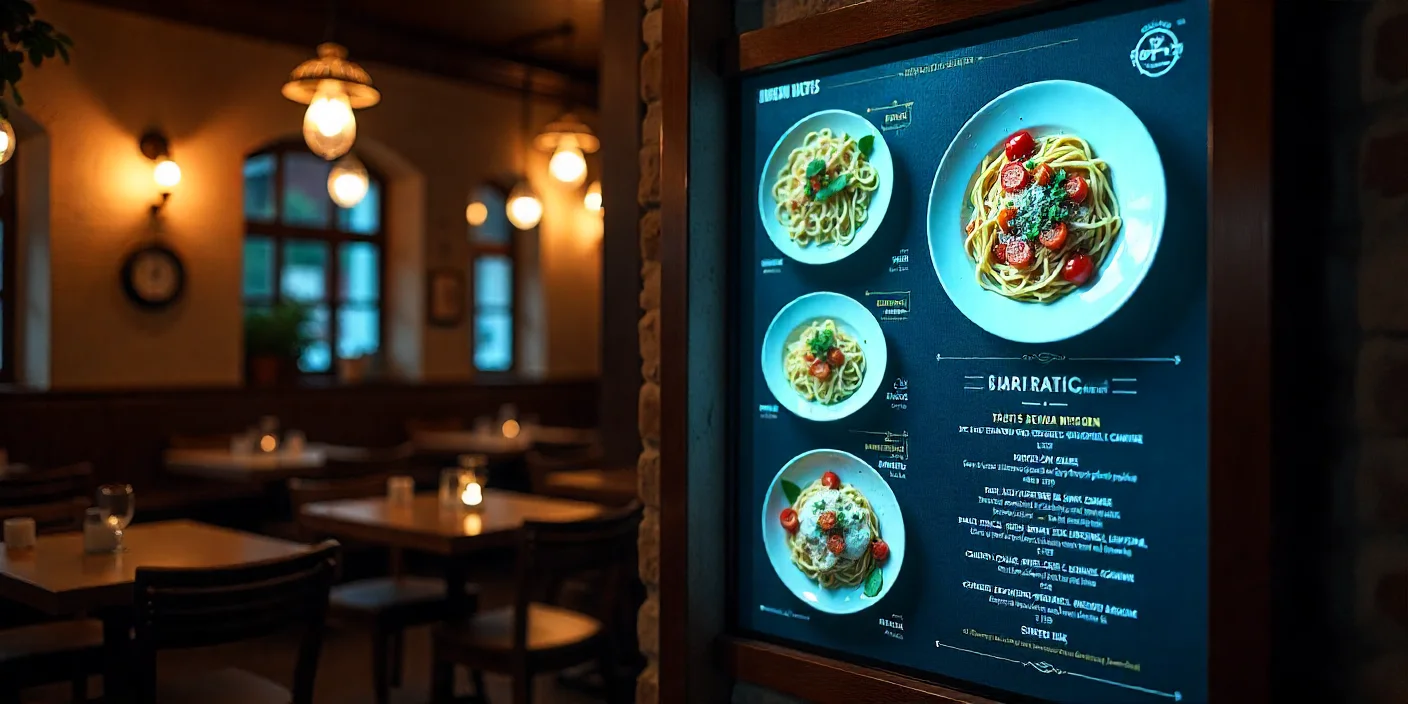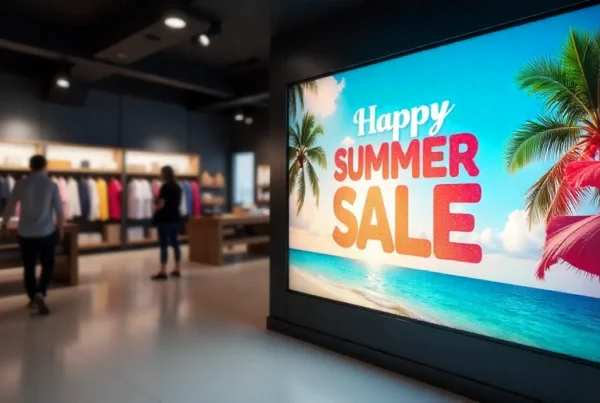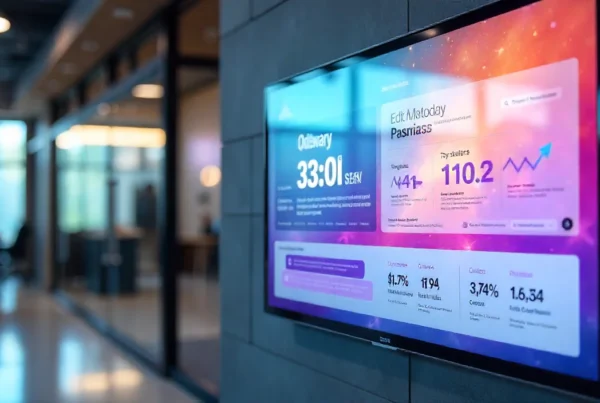Go through any airport, cafe, retail aisle, or lobby, and you will notice it: screens lifting the heavy load of modern communication. Menus are changing on a daily basis, promotional displays come alive on command, and dashboards shake with real-time information. Behind either of those screens is Digital Display Software—the control center that allows you to create, schedule, and manage content on a single screen or in a fleet around the world.
Whether it is a first-time purchase or a replacement of an existing network, this guide breaks down the choices, features, and trade-offs so that you can be assured you have made the top digital display software choice to suit your application.
Whether you’re managing a single screen or a global network, finding the right platform is key. For a solution that combines power with simplicity, explore Nento’s features today.
What Is Digital Display Software? (The Foundation)
Definition: Digital display software is a cloud or on-prem application to design, arrange, publish, and track the content on networked screens. Consider it as the working layer of your visual communications ecosystem.

Core building blocks:
• Content Management System (CMS): Post photos, videos, HTML5, PDFs, links, and data feeds, and organize them as playlists. Digital signage display software (sometimes referred to as digital media display software in the industry) is a computer-based software application that allows a user to create a digital signage display inside a company or organization, typically displayed on a single screen (or multiple screens).
• Scheduling & Targeting: Choose what to play and where and when, down to location, screen, time of day, or audience group. Works on one or thousands of digital screens.
• Remote Device Management: Onboard devices, push updates, and view health and uptime on a single dashboard—essential where the distributed fleet uses digital display screen software.
• Template Design: Digital Signage Design Templates and drag-and-drop tools enable non-designers to create on-brand content in a short amount of time.
Key Types of Digital Display Software
Various businesses are dependent on various modes. The following is a breakdown of the landscape (similar terms that you will come across):
Digital Menu Display Software/Digital Menu Display Board Software
In the case of restaurants, cafes, and QSRs. Focuses on simple edits of prices, nutrition, and allergen callouts, and dayparting logic. When you operate a fast-casual concept, this online menu display software will keep things updated and offer a timely display.
Digital Display Advertising Software
Perfect for venues, agencies, and retailers selling ad inventory. Search ad scheduling, proof-of-play, zone control, audience targeting, and performance analytics to monetize screen time.
Digital Information Display Software
In corporate, education, healthcare, and public areas: events, wayfinding, room schedules, BI dashboards, and HR notices. It can be easily combined with data tools, intranets, and calendars.
Interactive Display Software
Touchscreen (museums, trade shows, retail showrooms). Enhances on-screen interactivity in navigation, product discovery, and lead capture.
Dynamic Digital Display Software (a.k.a. Dynamic Display Software)
Any stack that delivers real-time or data-driven content: social feeds, weather, live news, inventory, queue status, and KPIs. This is the pulse of present-day, context-sensitive messaging.
You shall also encounter words such as “digital display board software” or “digital signage display software” used broadly. Little attention should be paid to labels and more to whether the feature set suits your objectives.
Must-Have Features of Top Digital Display Software
In order to filter out applicants and only get the best, consider the following basics:
• User-Friendly Interface: A drag-and-drop CMS that is intuitive and allows reuse of layouts and reuse of brand kits keeps teams moving quickly and consistently. (Essential to multi-site operations that create signage day in and day out.)
• Reliability & Uptime: Offline playback, health checks, and auto-recovering make content always on. Downtime kills trust.
• Flexible Scheduling and Playlisting: Dayparting, conditional logic, location targeting, and campaign-level controls.
• Content Zoning: Divide one digital display screen into separate areas (e.g., hero video + ticker + promo panel) without design anarchy.
• Robust Media Support: Video, images, HTML5, live web views, and data/API widgets—the platforms of the day are very versatile.
• Device & Player Management: Simple provisioning, software upgrades, role-based access, and scale alerts.
• Scalability: Expand pilot to hundreds of endpoints without re-architecting. Fleet management and governance are also important when you increase the number of digital display boards.
• Security & SSO: Your network and workflows are safeguarded by role controls, audit logs, and single sign-on.
Once these are nailed to a platform, you just have the best digital display software program to depend on in the long term.

Choosing the Right Solution: A Buyer’s Checklist
1) Define Your Goals: What do you want: increase the size of the basket, make wayfinding faster, reduce perceived wait time, or increase internal message recall?
2) Assess Your Team’s Technical Depth:Require plug-and-play or enterprise? When you only have basic IT resources, go simple rather than fancy.
3) Map Your Content Mix: Static images? Short video loops? Live information (BI dashboards, POS, social, weather)? Interactive touch? The answer points to the interactive display software, vs. digital information display software, vs. digital display advertising software, etc.
4) Budget the Full Picture: SaaS (per-screen or per-device) is the norm. Other operations research open-source digital display software to evade license costs—but be realistic: you will bear integration, hosting, security patches, and maintenance.
5) Hardware Compatibility: Tested with your media player OS (Android/Windows/ChromeOS/Linux) and business displays.
6) Governance: Who has the power to publish, approve, and localize content? Multi-brand or multi-region teams require fine-grained positions and audit histories.
7) Analytics & ROI: Tie screen to results—QR scans, POS uplift, web visits, lead capture, and engagement. Measurement should be simple with your digital signage display software.
Evaluating this checklist can be daunting. Nento offers transparent pricing and a dedicated support team to help you find the perfect plan for your needs.
Practical Scenarios (Matching Needs to Tools)
• Hospitality/QSR: You will probably be relying on digital menu display software with dayparting, allergen flags, and promo rotations, as well as device health checks to maintain service.
• Retail & Venues Monetizing Screens: You require digital display advertising software for ad trafficking, zones, and proof-of-play.
• Corporate and Campuses: Select digital information display software to use in calendars, wayfinding, alerts, and BI dashboards, often in combination with non-interactive lobby screens run by digital media display software.
• Experience Space: In the case of a showroom and museum, tactile exploration, product comparison, and self-guided tours are supported by interactive display software.
• Data-Heavy Networks: A dynamic digital display software stack subscribes to live feeds (queues, inventory, weather, traffic, news) to make them relevant at any given moment.
FAQs
What’s the difference between digital signage hardware and software?
Software (such as Nento) is an application that controls content, timing, and devices. Screens, mounts, and media players are hardware that render content. You must work with the other through the digital display screen software.
Can I use a regular TV for digital signage?
Yes. Install a media player that is compatible with operating your digital display screen software and connecting to the internet. Certain models of smart television come with an in-built player, but dedicated devices tend to be more reliable.
How much does digital signage software cost?
The majority of solutions are based on a per-screen SaaS model. Prices vary according to capabilities, support, and size. Open-source digital display software may be free, but you will do the engineering, hosting, and maintenance internally.
What type of content works best on digital displays?
Low-resolution images and short and looping videos with a clear hierarchy. Make the copy brief and time every frame so that users can read. In the case of restaurants, digital menu display software with branded templates facilitates faster updates and provides clarity.
Powering Your Digital Communication
Finding the appropriate digital signage display software is an investment in engagement, efficiency, and brand consistency. The best platform is robust enough to meet your goals but easy enough to be used daily by your team, be it implementing digital display board software in a single cafe or managing a multi-region network with dynamic display software and data integrations.
Ready to unlock the potential of your screens and captivate your audience? Start your free trial with Nento and experience why we’re consistently ranked among the top digital display software solutions available.





